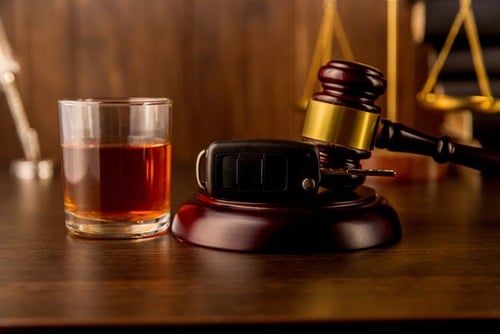
New Worker’s Compensation Dashboard Highlights Injury and Claim Statistics in Wisconsin
The Wisconsin Department of Health Services recently launched a new workers’ compensation dashboard that provides information about workplace injuries and workers’ compensation claims in the state. The data published through the dashboard provide some interesting insights into trends, common injuries, and the compensation awarded to injured workers and their families. Here are some highlights based on the most-recent data available:
More than 20,000 Employees File Workers’ Compensation Claims in Wisconsin Each Year
According to the latest data in the dashboard, more than 20,000 employees file workers’ compensation claims in Wisconsin each year. While the total number of claims filed has dropped in the past couple of years, this is still a lot of claims.
On average, 76.7% of all workers’ compensation claims filed over the past five years were paid (with the most recent data coming from 2023). Of course, this means that 23.3% of workers’ compensation claims—or nearly one in four—are unsuccessful.
Strains Are the Most Common Injuries Leading to Workers’ Compensation Claims in Wisconsin
The Wisconsin Department of Health Services’ workers compensation dashboard shows that strains, sprains, and tears are the most common injuries leading to workers’ compensation claims by a fairly significant margin. Of the 126,738 claims filed from 2019 to 2023, 49,087 involved these types of injuries. According to the dashboard, the most common causes of workers’ compensation claims in Wisconsin are:
- Strains, sprains, and tears
- Slips, trips and falls
- Miscellaneous causes
- Being struck or injured by an object
- Cuts, punctures, and scrapes
- Getting caught in or under an object
- Striking against or stepping on an object
- Burning and scalding
- Motor vehicle accidents
The dashboard also identifies the most common body parts involved in workers’ compensation claims in Wisconsin. From most common to least, the body parts most commonly injured in work-related accidents are:
- Shoulders
- Lower back
- Knees
- Fingers
- Ankles
- Wrists
- Hands
- Feet
- Body systems
Manufacturing is the Most Dangerous Industry, But Transportation and Material Moving are the Most Dangerous Occupations
Based on the dashboard’s data, manufacturing is the most dangerous industry for workers in Wisconsin. Approximately one in five workplace injuries in Wisconsin involve manufacturing, and the manufacturing industry has a workers’ compensation claim rate of 9 per 1,000 full-time equivalent employees. The industries with the highest numbers of workers’ compensation claims in Wisconsin over the past five years are:
- Manufacturing
- Healthcare and social assistance
- Retail trade
- Transportation and warehousing
- Public administration
- Construction
- Administrative and support services
- Wholesale trade
- Educational services
But, while manufacturing may be the most dangerous industry for workers in Wisconsin, drivers face the highest risk of getting injured on the job. According to the dashboard, the occupations with the highest numbers of workers’ compensation claims in Wisconsin over the past five years are:
- Transportation and material moving
- Production
- Office and administrative support
- Healthcare practitioners and technical services
- Construction and extraction
- Installation, maintenance, and repair
- Building and grounds cleaning and maintenance
- Healthcare support
- Food preparation and serving-related occupations
Lifting Injuries and Shoulder Injuries Are Among the Most Expensive for Employers and Their Insurance Companies
Overall, the Wisconsin Department of Health Services’ workers compensation dashboard shows that lifting injuries are the most expensive for employers and their insurers. Self-insured employers and workers’ compensation insurance companies paid more than $17 million in total non-medical costs (lost time, permanent partial disability, and permanent total disability) for lifting injuries in 2023. Fall-related injuries are the next most-expensive, followed by: sprains, strains, and tears; pushing and pulling injuries; and injuries from twisting and repetitive motion.
Given that lifting injuries are so common, it is not a surprise that shoulder injuries are among the most expensive for employers and their insurers as well. Shoulder injuries accounted for approximately 20% of all non-medical costs paid in 2023, followed by injuries to the knees, lower back, ankles, wrists, and feet. In terms of the nature of workers’ injuries, sprains, strains, and tears are the most costly, followed by fractures and contusions.
Dozens of Wisconsin Families Are Forced to Cope with Fatal Workplace Accidents Every Year
Sadly, the dashboard’s data show that dozens of families in Wisconsin lose loved ones to fatal workplace accidents every year. While the dashboard does not provide detailed information on these fatal accidents, it is safe to assume that many of them occur in the state’s most-dangerous injuries and most-dangerous occupations, which we covered above. When workplace accidents lead to fatalities, spouses and other eligible family members are entitled to seek workers’ compensation death benefits under Wisconsin law.
Are You Struggling to Cope with the Effects of a Work-Related Accident in Wisconsin?
Are you struggling to cope with the effects of a serious or fatal work-related accident? If so, you may be entitled to workers’ compensation benefits under Wisconsin law. Eligible employees and family members can file workers’ compensation claims on a “no fault” basis, which means that proof of the cause of your (or your loved one’s) accident is not required. While there are some exceptions, these exceptions do not apply in most cases.
If you have a workers’ compensation claim, there are specific requirements you need to meet (including strict deadlines), and mistakes and delays can prove very costly in some cases. With this in mind, it is important that you take action as soon as possible. You can hire a lawyer to help with your workers’ compensation claim at no out-of-pocket cost, and you can rely on your lawyer to fight for the benefits you deserve on your behalf.
Schedule a Free Consultation with a Madison Workers’ Compensation Lawyer today
If you or a loved one has been involved in a workplace accident in Wisconsin, we strongly encourage you to contact us for more information about your legal rights. We represent employees and families in workers’ compensation claims statewide. To schedule a free consultation with a Madison workers’ compensation lawyer at Mays Law Firm as soon as possible, call us at 608-291-7609 or tell us how we can reach you online today.





Recent Comments